 |
 |
 |
| |
Combined darunavir and etravirine resistance analysis of the pooled DUET trials: when can we spare the other new classes?
|
| |
| |
from Jules: This analysis did not include consideration of NRTI backbone, but the author does feel as though the analysis will stand up.
Reported by Jules Levin
Richard Haubrich,1 Jonathan M Schapiro,2 Johan Vingerhoets,3 Steven Nijs,3 Monika Peeters,3 Goedele De Smedt,3 Brian Woodfall,3 Marie-Pierre de BŽthune,3 Gaston Picchio4
1University of California San Diego, San Diego, CA, USA; 2National Hemophilia Center, Sheba Medical Center, Tel Hashomer, Israel; 3Tibotec BVBA, Mechelen, Belgium; 4Tibotec Inc., Yardley
AUTHOR CONCLUSIONS
· High virologic responses (³65%) can be achieved, without addition of new classes, through a favorable combination of ETR and DRV resistance profiles- FC DRV ≦40 and FC ETR ≦3- weighted genotypic ETR score [0-2] with up to three DRV RAMs
- weighted genotypic ETR score [0-2] and [2.5-3.5] with up to one DRV RAM.
· Knowledge of the response rates associated with a combined DRV + ETR resistance profile may be useful to design optimally successful regimens
- for patients with a diverse resistance profile
- to guide decisions about the number of new agents to use in the regimen.
· Efficacy analyses based on resistance interpretations considering drug combinations may be more clinically relevant than those addressing only each drug individually.
Abstract
Background
Designing regimens for treatment-experienced patients requires simultaneous evaluation of resistance to multiple agents. The number of new/active agents needed to optimally suppress HIV replication is currently not fully known.
Methods
Subgroup analysis from the pooled DUET trials of patients not using enfuvirtide (ENF) as a new drug; discontinuations for non virologic failure were excluded (n=406). Previously described resistance-associated mutations (RAMs) to etravirine (ETR; TMC125) or darunavir (DRV) and phenotype (Antivirogram¨) were analyzed as predictors of a confirmed HIV-1 RNA <50 copies/mL at Week 24. Virologic responses in subgroups with different DRV and ETR genotype/phenotype patterns were evaluated.
Results
Response rates declined with increasing numbers of combined baseline DRV and ETR RAMs: 78% for zero total RAMs, 0% for >3 DRV and ETR RAMs. The proportion of patients with ETR/DRV resistance profiles that achieved HIV-1 RNA <50 copies/mL at 24 weeks is shown in the table. Those with a virologic response >65% are shaded.
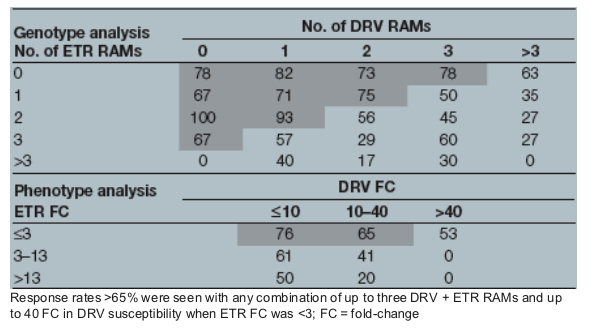
Conclusions
Virologic responses within the range of those observed in na•ve patients (>65%) were achieved with ETR + DRV + background regimen (BR) in the absence of other new classes provided that the total number of ETR + DRV RAMs was equal to or less than three. High responses are also seen in patients with more resistance, but these patients might benefit from additional active agents.
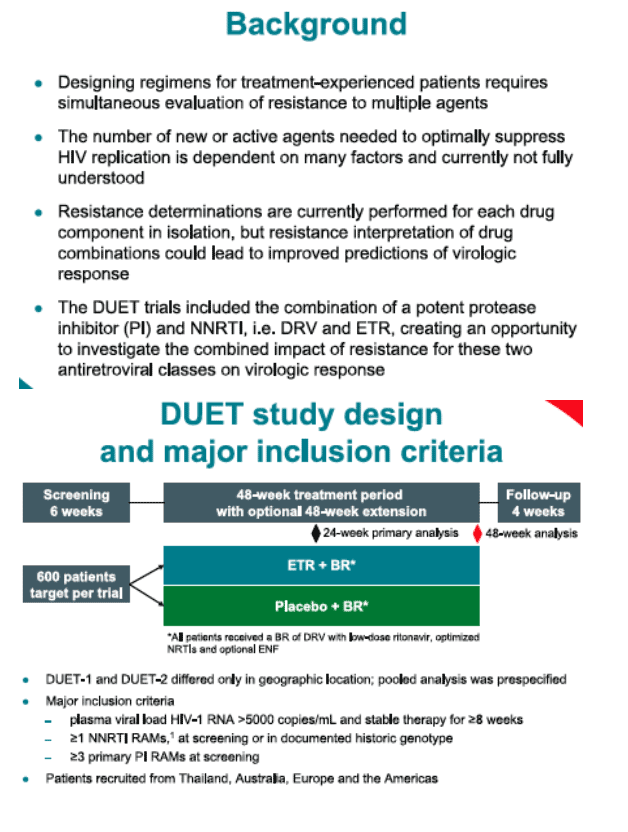
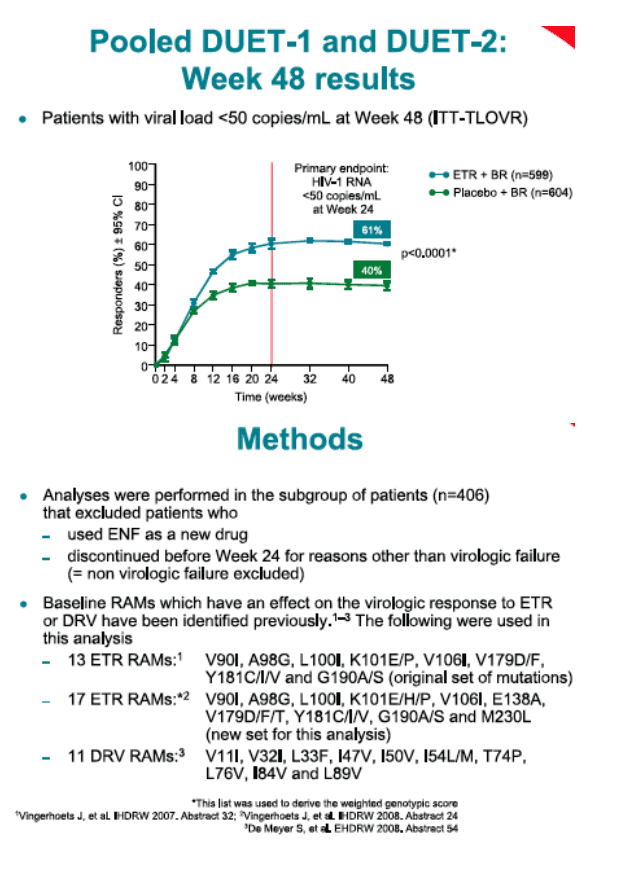
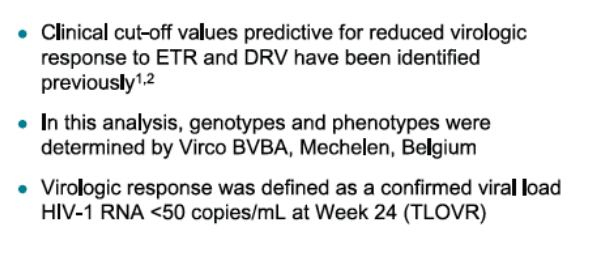
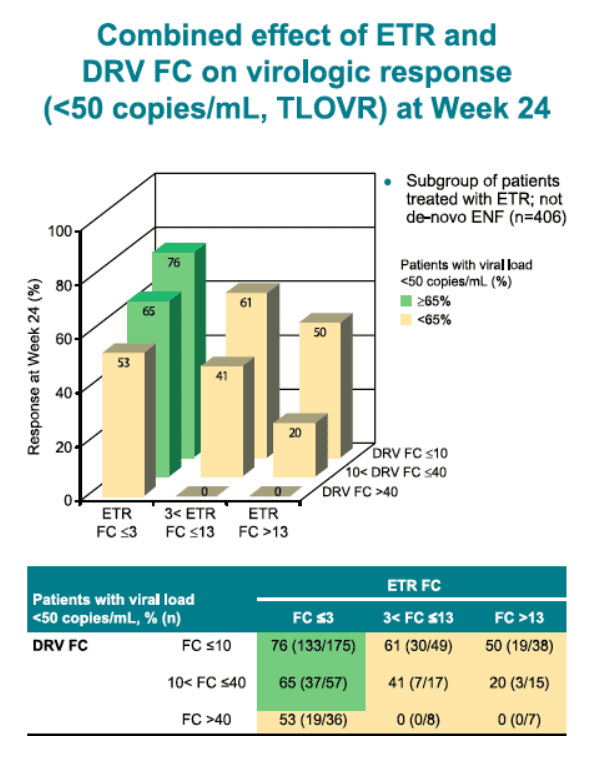
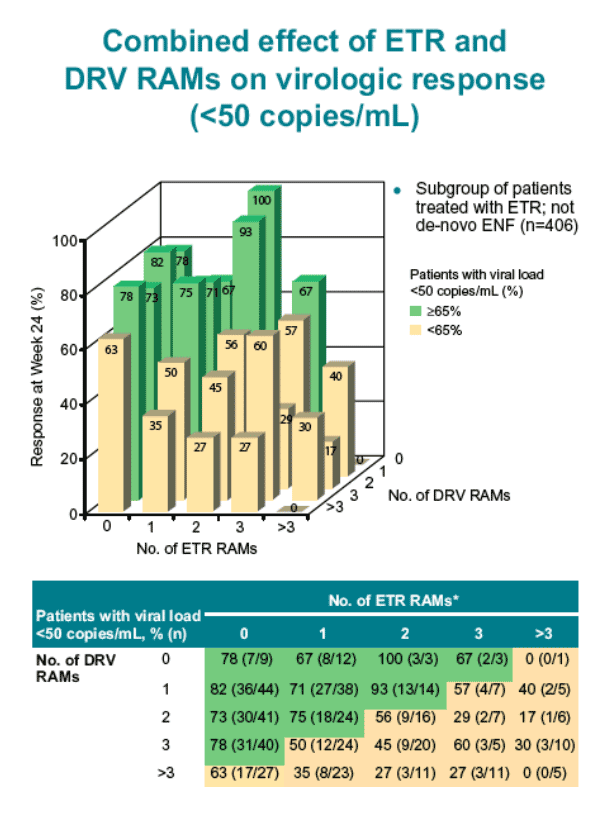
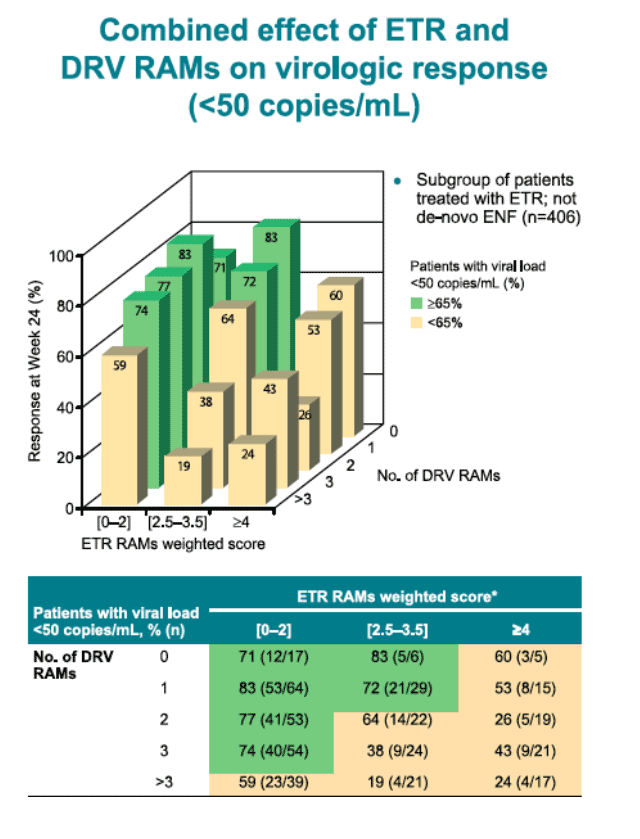
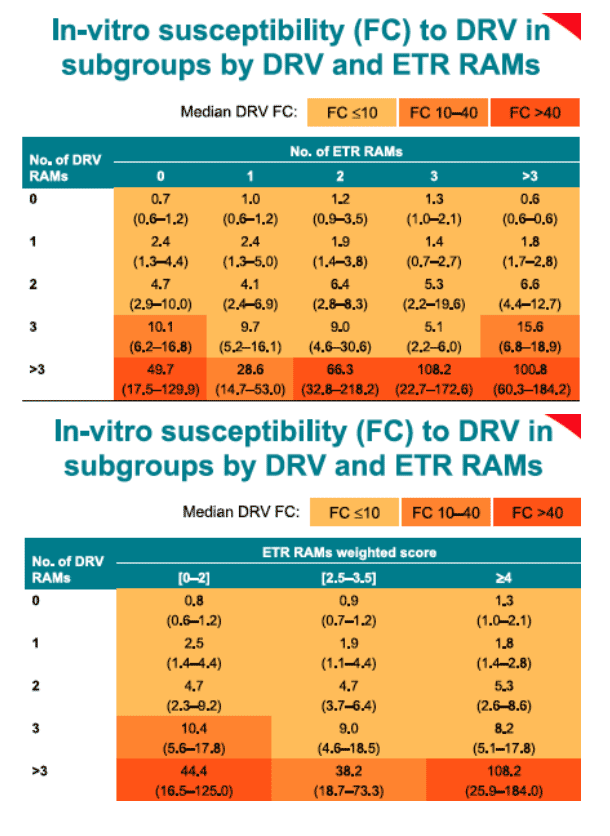
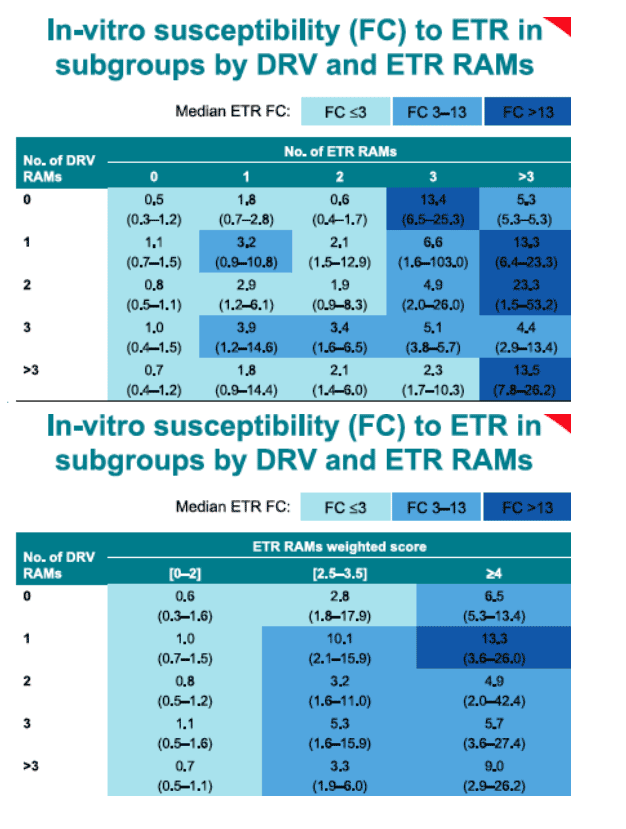
|
| |
|
 |
 |
|
|